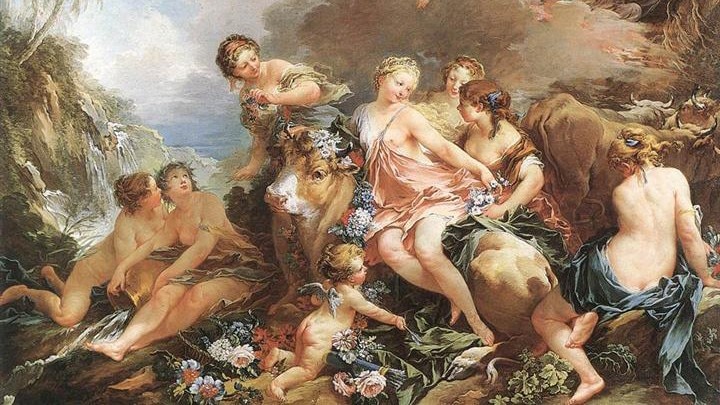“We are living in a time of great upheavals: youth unemployment, migration, climate change, the digital revolution, the new world balance, to name just a few. If we are to tackle these new challenges, we need new ideas and the courage to combine wisdom with a bold approach. (…) Dear colleagues, Europe still has much to say if we can all speak with one voice, if we can place political debate at the service of the people of Europe and if Parliament can grasp what they want, what they fear and – above all – what they need.”
This is a small part of the inauguration speech that David Sassoli delivered the day he was elected President of the European Parliament in Strasbourg. Sassoli talked of freedom and rights, solidarity and precious differences, he told the story of countries often divided and sometimes united. David Sassoli, who sadly passed away on January 11, was a great pro-European. He had elegant, quiet ways, and he always displayed his commitment to a united Europe.
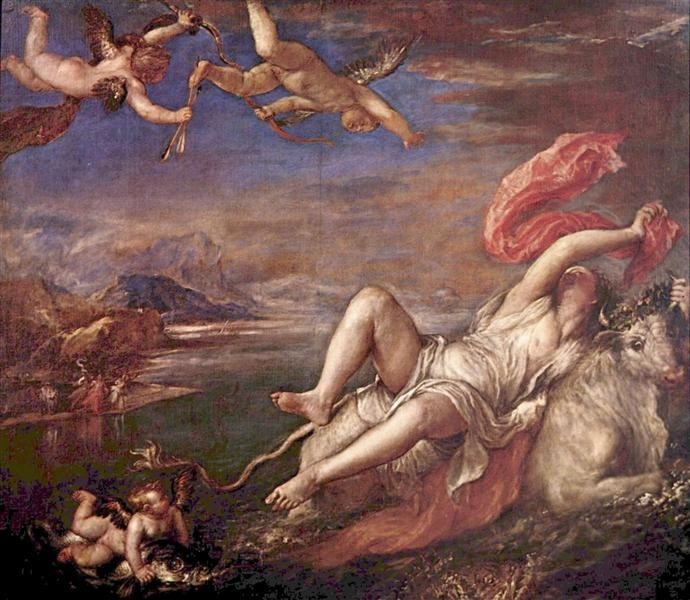
Europa is an ancient image and a mythological figure. It was first used in a geographical context in the Homeric Hymn to Delian Apollo, in reference to the western shore of the Aegean Sea. Interpreted by history and geopolitics, Europa has been the muse of many painters such as Guido Reni, Peter Paul Rubens, Titian, Paolo Veronese and Rembrandt, and even managed to be the protagonist of one of the most seductive representations in the history of painting through François Boucher’s brush.
In some ways, the image of Europa is always still relevant, as it is a metaphor for Europe’s history. Princess of Tyre and Queen of Crete, Europa is often portrayed at the moment when Zeus manages to overpower her in the woods to which she had fled. Resigned and strong, beautiful and powerful, Europa has these characteristics in every age and every artist’s interpretation.
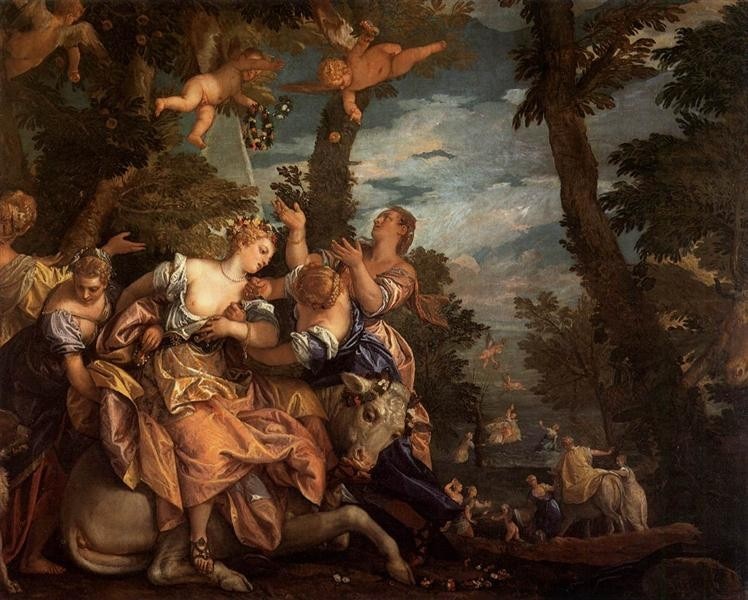
In 1630, Peter Paul Rubens made a masterful copy of Titian’s 1562 The Rape of Europa, commissioned to the Venetian painter by King Philip II of Spain. Rubens represents the woman through strong shapes and lines, very characteristic of the Flemish artist’s painting style. Zeus, in the form of a white bull, seduces the woman by making her climb on his back, while Europa’s ladies-in-waiting call out to her in despair, on the other side of the river. The perspective unfolds from right to left, in an oblique line represented by the waters that become the timeline of the artwork. Vivid, vibrant colours narrate the scene, symbolising its violence through the full-bodied material created by the artist’s brush. The work is identical in form but different in colour from Titian’s original artwork.
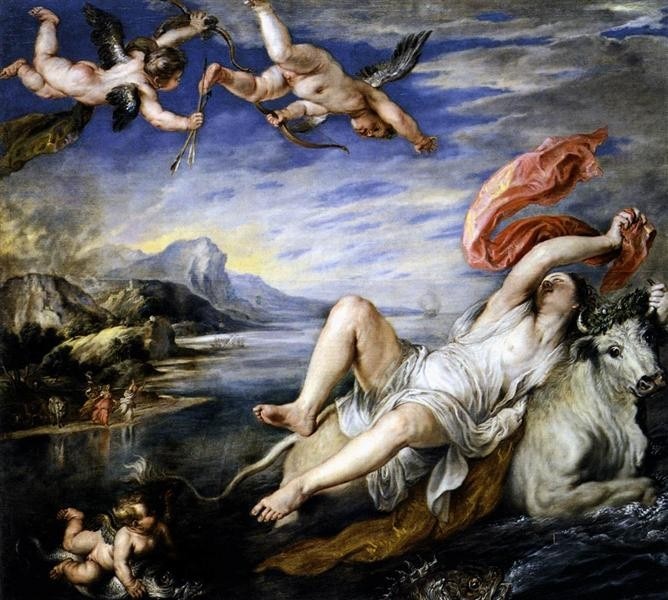
In the first half of the 18th century, French artist Boucher told the story of Europa shortly before being rapes, in a moment of convivial peace. The pyramidal construction of the scene makes Europa look almost like a virgin, a crowned saint. The putti above her head appear almost like the holy spirit. Sweet, languid, innocent, disenchanted, this is Boucher’s Europa - an uninjured, not raped, seductive woman who at the same time retains a mystical innocence.
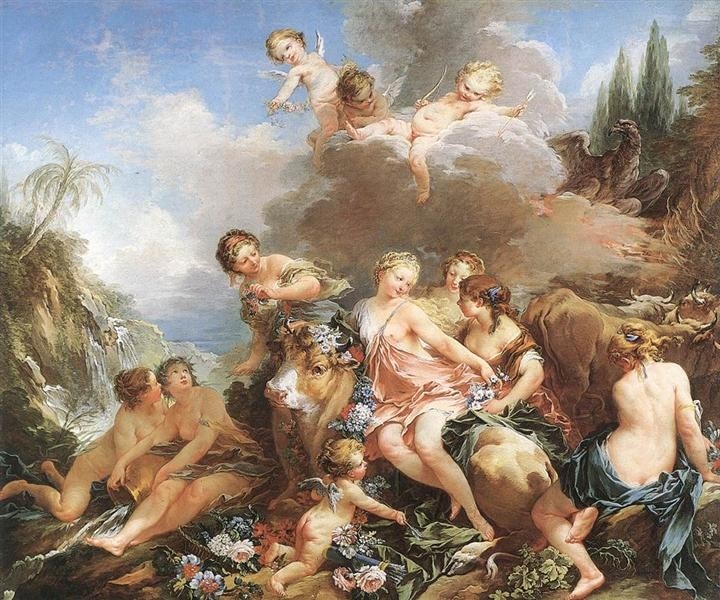
“Myth is a word”, theorised Roland Barthes, “a system of communication”. We are children of this myth, of the myth of Europa. A reflection of a thought, a geographical and political changing identity. The Europe of the Roman Empire, the Europe of Dante, the Europe of Napoleon, or the Europe of the 20th century. Which Europe? The Europe of the wars that made our history? The Catholic Europe that saw the birth of protests and protestants? We are the children of a myth that has suffered violence and then risen from that violence and evolved, in the hope that it will always remain strong and united.


